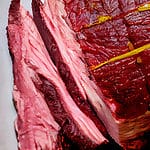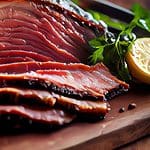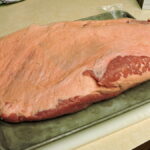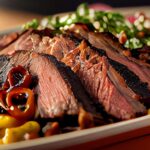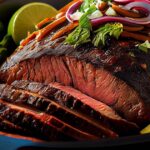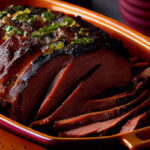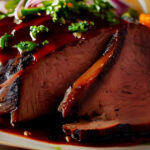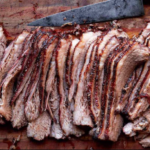Perfect Cook Time for Smoking a 2-Pound Brisket
Smoking a brisket is an art form that requires the right combination of technique, equipment, and patience. Whether you’re a beginner or a seasoned pro, smoking a perfect 2-pound brisket can be a challenge. But with the right tips and tricks, you can achieve mouthwatering results every time.
In this guide, we’ll cover everything you need to know about smoking a 2-pound brisket, from preparation and cooking methods to serving and storing leftover brisket. Follow these expert tips and techniques to become a brisket pro and impress your friends and family with delicious, perfectly smoked meat.
Factors affecting cook time
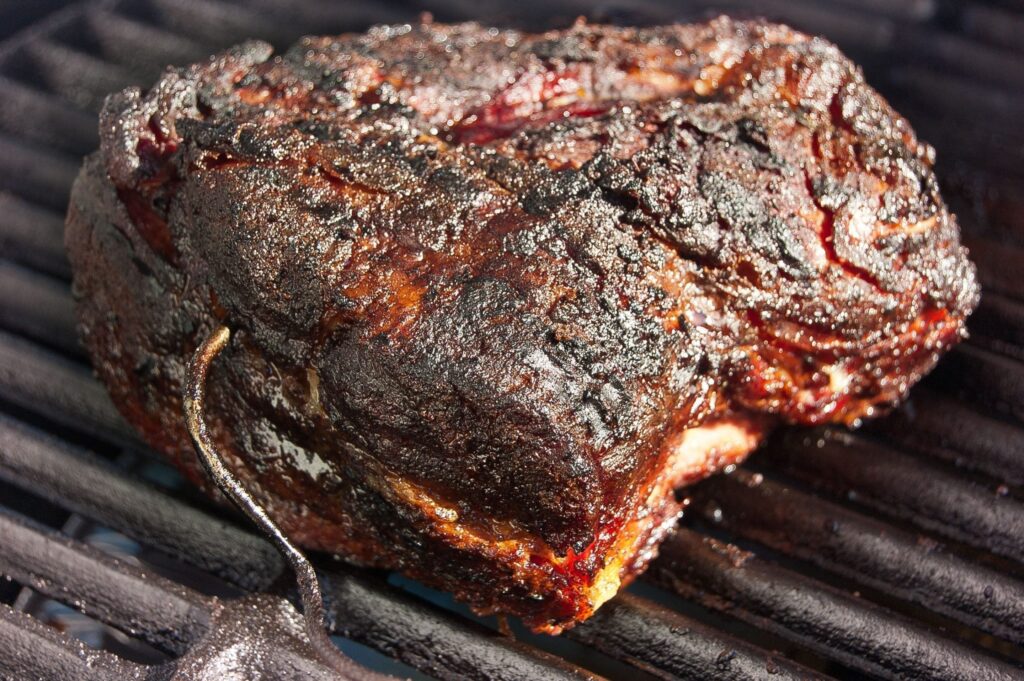
When it comes to smoking a brisket, there are a few key factors that will determine the cook time.
- Size of the beef brisket: The larger the brisket, the longer it will take to cook. A good rule of thumb is to allow for about 1 hour of cook time per pound of brisket. For example, a 2-pound brisket will take about 2 hours to cook, while a 10-pound brisket will take closer to 10 hours. Keep in mind that this is just a general guideline and actual cook times may vary based on other factors.
- Type of smoker: Different types of smokers will cook at different rates. An electric smoker may cook a bit faster than a traditional wood or charcoal smoker, for example.
- Cooking temperature: Smoking at a lower temperature will take longer, but it can result in a more tender and flavorful brisket. On the other hand, cooking at a higher temperature may be faster but can lead to a drier and less tender finished product.
- Thickness of the meat: A thicker cut of brisket will naturally take longer to cook than a thinner one. Be sure to adjust your cook time accordingly.
- Personal preference: Ultimately, the cook time for your brisket will depend on your personal preference for doneness. If you prefer a more well-done brisket, you may need to cook it for longer. If you prefer it to be more medium rare, you can reduce the cook time.
Preparation steps
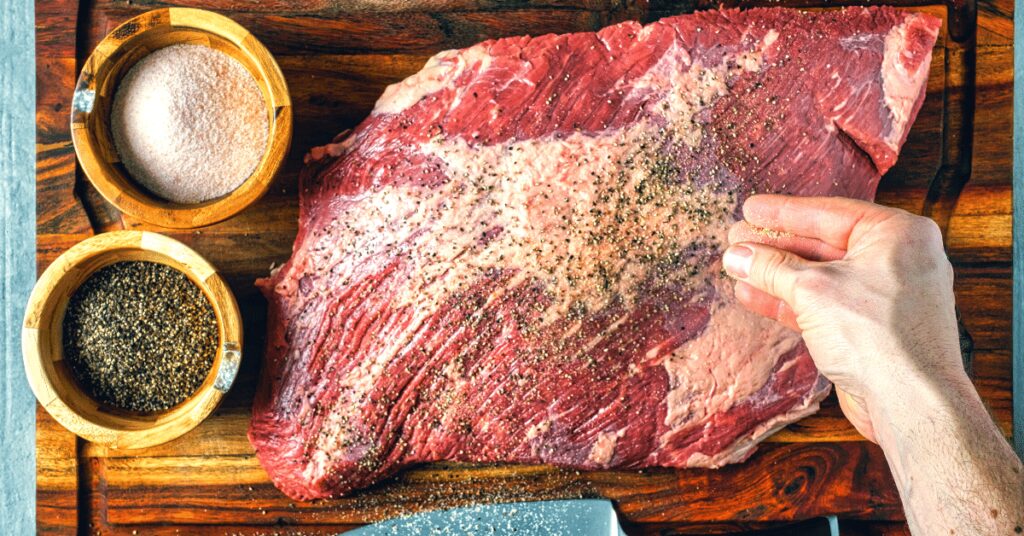
Before you start smoking your brisket, there are a few preparation steps you’ll want to take to ensure the best possible outcome.
- Bring brisket to room temperature: Take your brisket out of the fridge and let it sit at room temperature for about an hour before cooking. This will help the meat cook more evenly.
- Remove excess fat: Trim off any excess fat from the brisket, but be sure to leave a thin layer to help keep the meat moist during cooking.
- Apply dry rub: Mix together your desired spices to create a dry rub, and generously coat the brisket on all sides. Some classic brisket dry rub ingredients include black pepper and garlic powder. You can also add a bit of apple cider vinegar to the rub to add some tanginess to the finished product.
- Preheat smoker: Preheat your smoker to the desired cooking temperature. This will allow the smoke to penetrate the meat more evenly.
Cooking the brisket
Once your brisket is prepared and your smoker is heated up, it’s time to start cooking.
- Place fat side up: Place the brisket in the smoker with the fat side facing up. This will help keep the meat moist and flavorful as it cooks.
- Use a meat thermometer: Insert a meat thermometer into the thickest part of the brisket to monitor the internal temperature. This is the best way to ensure that your brisket is cooked to the desired level of doneness.
- Cook at low temperature: For the best results, cook the brisket at a low temperature (around 225-250 degrees Fahrenheit) for a long time. This will allow the smoke to fully penetrate the meat and the connective tissue to break down, resulting in a tender and flavorful finished product.
- Wrap in aluminum foil or use the “texas crutch”: If you want to speed up the cook time, you can wrap the brisket in aluminum foil (also known as the “”texas crutch”) about halfway through the cook time. This will help the brisket cook faster, but it may also result in a less smoky flavor. Alternatively, you can use pink butcher paper instead of aluminum foil for a similar effect.
Finishing the brisket
Once your brisket is cooked to your desired level of doneness, it’s important to let it rest before slicing and serving.
- Let the brisket rest: Remove the brisket from the smoker and let it sit for at least 30 minutes before slicing. This will allow the juices to redistribute throughout the meat and make it more tender.
- Slice against the grain: To ensure a tender finished product, be sure to slice the brisket against the grain. This means you should cut perpendicular to the lines of muscle fibers in the meat.
- Serve with barbecue sauce or other desired condiments: Serve the sliced brisket with your desired condiments, such as barbecue sauce or mustard.
Tips for a successful brisket
Here are a few tips for achieving the best possible results when smoking a brisket.
- Choose the right cut of meat: For the best flavor and tenderness, choose a whole packer brisket or a point cut. These cuts contain both the flat cut and the deckle (also known as the “point”), which are the most flavorful and tender parts of the brisket.
- Use wood chips or pellets for smoke flavor: Wood chips or pellets will add a delicious smoky flavor to your brisket. Experiment with different types of wood to find the one that you like best.
- Consider using a pellet grill or electric smoker: For convenience, consider using a pellet grill or electric smoker. These types of smokers are easier to use and require less maintenance than traditional wood or charcoal smokers.
- Use pink butcher paper to retain moisture: Pink butcher paper is a type of paper specifically designed for wrapping meats while smoking. It helps to retain moisture and can result in a juicier finished product.
- Follow a general rule of thumb: As a general rule of thumb, allow for about 1 hour of cook time per pound of brisket. This will vary based on the other factors discussed earlier, so be sure to use a meat thermometer to ensure your brisket is cooked to your desired level of doneness.
Troubleshooting
If you encounter any problems while smoking your brisket, here are a few potential solutions.
- If the brisket comes out dry: If your brisket turns out dry, it may be because it was overcooked or cooked at too high of a temperature. To prevent this in the future, try cooking at a lower temperature for a longer time, or use the “texas crutch” to speed up the cook time without drying out the meat.
- If the brisket is tough: If your brisket is tough, it may be because it was undercooked or cooked at too low of a temperature. To fix this, try cooking at a higher temperature for a shorter time, or cook the brisket for a longer time at a lower temperature to allow the connective tissue to break down.
- If the brisket is not flavorful enough: If your brisket is not as flavorful as you’d like, try using a stronger dry rub or injecting the brisket with apple cider vinegar before cooking. This can help add some extra flavor to the finished product.
Serving and storing leftover brisket
There are many delicious ways to serve leftover brisket.
- Slice leftover brisket: Thinly slice the leftover brisket and serve it on sandwiches, in burritos, or on its own with your desired condiments.
- Store in the refrigerator or freezer: Leftover brisket can be stored in the refrigerator for up to 4 days or in the freezer for up to 3 months. To freeze, wrap the sliced brisket tightly in plastic wrap or aluminum foil and place it in a airtight container or freezer bag.
Recipe variations and tips
Here are a few ideas for variations on the classic smoked brisket recipe, as well as some general tips for success.
- Experiment with different woods: Different types of wood will give your brisket a unique smoke flavor. Try experimenting with different woods, such as oak, hickory, or mesquite, to find your favorite.
- Try different dry rubs and sauces: Mix up the flavor of your brisket by using different dry rubs or sauces. Experiment with different spice blends or sauces to find your perfect combination.
- Vary the cooking time and temperature: Depending on your personal preference and the size of the brisket, you may want to adjust the cooking time and temperature. For example, if you prefer a more medium rare brisket, you may want to cook it for a shorter time at a higher temperature. Or, if you prefer a more well-done brisket, you can cook it for a longer time at a lower temperature.
- Pro tip: For extra tenderness, try injecting the brisket with a mixture of broth and apple cider vinegar before cooking.
Brisket outcomes and characteristics
Here are a few potential outcomes and characteristics you may experience when smoking a brisket.
- Juicy brisket: A well-smoked brisket should be juicy and flavorful. To ensure a juicy finished product, be sure to cook at a low temperature, use the “texas crutch” or pink butcher paper to retain moisture, and let the brisket rest before slicing.
- Tender brisket: A tender brisket is the result of cooking at a low temperature for a long time, which allows the connective tissue to break down and make the meat more tender. To ensure a tender finished product, follow the cooking tips outlined in this guide.
- Smoke flavor: A good smoked brisket should have a delicious smoky flavor. To add smoke flavor to your brisket, be sure to use wood chips or pellets and cook at a low temperature for a long time.
- Meat candy: “Meat candy” is a term used to describe extremely tender and flavorful brisket. To achieve “meat candy” status, follow the cooking tips outlined in this guide and choose a high-quality cut of meat.
- Dry brisket: A dry brisket can be the result of overcooking or cooking at too high of a temperature. To prevent a dry brisket, be sure to monitor the internal temperature of the meat and use the “texas crutch” or pink butcher paper
Frequently Asked Questions
How long does it take to cook a 2-pound brisket?
A 2-pound brisket will take approximately 2 hours to cook, using the general rule of thumb of 1 hour per pound of brisket. However, the actual cook time may vary depending on the cooking temperature, the desired level of doneness, and the specific characteristics of the meat. Be sure to use a meat thermometer to accurately check the internal temperature of the brisket as it cooks, and remove it from the heat once it reaches your desired level of doneness.
What is the best way to choose a lb brisket?
When choosing a lb brisket, it’s best to choose a whole packer brisket or a point cut, which contain both the flat cut and the deckle (also known as the “point”). These cuts are generally the most flavorful and tender parts of the brisket. You can also ask your local butcher for recommendations on the best cut for smoking.
How do I know if I have the best brisket for cooking?
To determine if you have the best brisket for cooking, look for a cut with a good amount of fat marbling throughout the meat. This will help keep the meat moist and flavorful as it cooks. You should also choose a cut that is as evenly shaped as possible, as this will allow for more even cooking.
How do I know when to flip the fat cap on a brisket?
When smoking a brisket, it’s best to leave the fat cap on and facing up for the entire cook time. This will help keep the meat moist and flavorful as it cooks. However, if the fat cap is starting to burn or char before the brisket is fully cooked, you can carefully flip it over to protect it.
What is the internal temperature of the brisket when it reaches perfection?
The internal temperature of the brisket when it reaches perfection will depend on your desired level of doneness. For a medium rare brisket, the internal temperature should be around 135-140 degrees Fahrenheit. For a medium brisket, the internal temperature should be around 145-150 degrees Fahrenheit. For a well-done brisket, the internal temperature should be around 160-165 degrees Fahrenheit. Be sure to use a meat thermometer to accurately check the internal temperature of the brisket as it cooks, and remove it from the heat once it reaches your desired level of doneness.
What should I do if this is my first time cooking a brisket?
If this is your first time cooking a brisket, it’s best to start with a smaller cut of meat, such as a 3-pound or 4-pound brisket. This will allow you to get a feel for the cooking process and ensure that you don’t overcook the meat. It’s also a good idea to use a meat thermometer to check the internal temperature of the brisket and make sure it’s cooked to your desired level of doneness.
Bottom line
To sum up, smoking a 2-pound brisket is all about finding the right balance of cook time, temperature, and technique. By following the tips and tricks outlined in this guide, you can achieve tender, juicy, and flavorful results every time. Whether you’re a beginner or a seasoned pro, these expert techniques will help you master the art of smoking a 2-pound brisket and impress your friends and family with delicious, perfectly smoked meat.
More Brisket recipes and resource
Butcher’s Prime Brisket Injection Recipe
Cost of Deliciousness: How Much is Brisket and Why is it Worth it
Easy Masterbuilt Smoked Brisket Recipe for Tender, Juicy Success
How Long To Cook A 15 lb Brisket: Right Timing For Tender & Delicious Results
Cooking the Perfect Pit Boss Brisket Recipe (with 3 Smokers)
Delicious Traeger Brisket Recipe to Elevate Your BBQ Game
Franklin BBQ Brisket Recipe: The Best Brisket You’ll Ever Taste
Brisket Flat Recipe: A Step-by-Step Guide to Tender, Juicy Bliss
How Much Brisket to Feed 50 People: A Chef’s Guide

Shara @The Bird BBQ
Shara loves to experiment with different flavors and techniques when it comes to BBQ. She has been perfecting her craft for years and loves hosting backyard BBQs with friends & family. She often comes up with creative recipes that her guests rave about.

